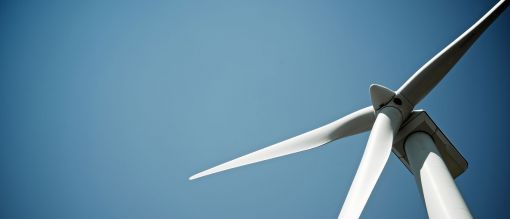
Case study
Optimiser Sweden
Wind power plays a vital part as the energy transition is gathering pace and governments are setting ambitious targets to expand capacity.
The development of a new wind farm represents a significant investment, and if wind assets are not performing to the highest level possible, they are missing out on both valuable clean energy and revenue.
The expected return on investment depends partly on the power performance. The data recorded by the wind farm supervisory control and data acquisition (SCADA) system is subject to high uncertainty, and manufacturers will generally not accept analysis based on these data as evidence of underperformance.
Wind power performance testing (PPT) is the independent measurement of wind speed at site along with the wind turbine generators (WTG) power output, to compare against the warranted power curve. Power curve measurements offer a benchmark from which assets can be optimised for real-world site conditions during the operational lifetime of the wind farm. This measurement is essential to ensure that WTG performance meets expectations and contractual obligations.
When conducting power performance testing according to the accredited procedure, power curve measurements are impartial and not biased towards a particular outcome.
![]()
Provides owners and operators with real leverage to address WTG under-performance and the opportunity to close gaps with the energy production level assumed in the business case.
![]()
Sets a benchmark for the real value of the asset, WTG optimisation, future testing and improved levels of production.
![]()
A retest, using equipment already installed onsite, can be carried out quickly and inexpensively to measure the effect of any steps taken to optimise performance.
While the concept is simple, there are several key steps required to undertake a power performance test: starting with the turbine supply agreement (TSA) negotiations and working with you until your asset is optimised considering the wind climate at the wind farm location.

We work with you to consider your development plans and budget at every step to offer practical and cost-efficient performance assessment solutions.
Over the last decade, our team has built a global track record of tackling even the harshest environments to specify, design, test, install and decommission fit-for-purpose wind measurement campaigns.
We support wind farm operators, investors and WTG manufacturers with measurement campaigns compliant with the IEC 61400-12-1 standard to provide confidence in the performance of new and operational wind farms.
Our team is experienced in measuring power curves from nacelle-mounted lidar, ground-based lidar and met mast anemometry. Whatever the wind farm design or constraints onsite, we can tailor our measurement campaign to ensure reliable and accurate data collection for the purposes of PPT and optimisation analysis. In practice, this means that Wood can implement a measurement campaign even if the construction of the wind farm has started, however starting as soon as possible provides benefits and cost efficiencies.
Where warranty provisions allow, our numerical site calibration solutions using computational fluid dynamics (CFD) make measuring the power curve cost-effective, even at wind farms with a relatively small installed capacity.
Offshore, where major WTG manufacturers allow contractual power curve testing with nacelle-mounted lidar, PPT is simple, economical and rapidly becoming commonplace.
Our customised PPT services provide the technical and contractual expertise needed to properly quantify WTG performance, extracting maximum value from power curve warranty negotiations and giving leverage to ensure that any sources of underperformance can be corrected.
Our team helped write the new edition of IEC Standard 61400-12-1 and are active members of the Consortium For the Advancement of Remote Sensing (CFARS), IEA Wind Task 52, BSI L/6/2 committee, IEC TC88 Technical Committee and IECRE Working Group SG 551.
Wood is accredited by UKAS according to ISO/IEC 17025:2017 to conduct power performance tests following the IEC Standard and IEA Wind Task 52 guidance.
We are a permanent member of the Measuring Network of Wind Energy Institutes (MEASNET) for Power Performance Services, and a recognised Renewable Energy Testing Lab for Power Performance within the IECRE system.
We fulfil all the requirements needed by WTG manufacturers, developers and lenders to perform power performance testing.

Bord na Móna, an Irish climate solutions company, is expanding its renewable energy infrastructure to support Ireland's goal of generating 80% of electricity from renewable sources by 2030.
Wood provided pre-construction analysis, including bank-grade energy yield and site conditions assessments, terrain and obstacle assessments to IEC 61400 standard, site visits and detailed assessments to ensure optimal performance.
Wood's expertise is facilitating the development of Ireland's largest group of onshore wind farms, contributing significantly to the country's renewable energy targets.